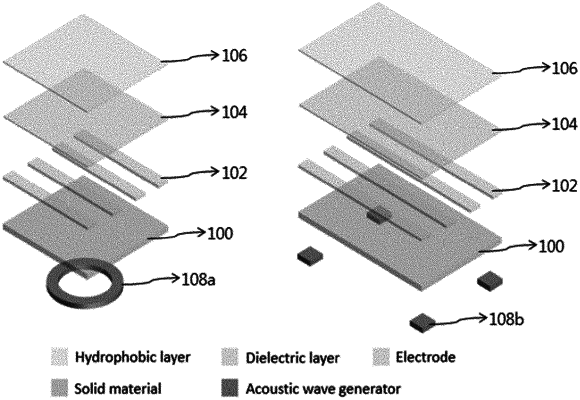| CPC B08B 7/026 (2013.01) [B08B 11/04 (2013.01); B08B 13/00 (2013.01); B60S 1/02 (2013.01)] | 9 Claims |

|
1. A self-cleaning device comprising:
at least one first electrode disposed on a solid material layer;
a first dielectric layer disposed on the first electrode;
a hydrophobic layer disposed on the first dielectric layer;
second electrodes disposed on the first dielectric layer;
a second dielectric layer disposed on the second electrodes; and
at least one mechanical oscillation unit,
wherein electrical oscillation for oscillating a droplet in a horizontal direction is generated by applying a first electric signal to the first electrode, thereby merging-droplets formed on the hydrophobic layer, and
the mechanical oscillation unit moves the merged droplets in a specific direction or atomizes the merged droplets to remove the merged droplets by generating mechanical oscillation for oscillating the droplets in a vertical direction,
the hydrophobic layer is disposed on the second dielectric layer, the at least one first electrode comprises a plurality of first electrodes, the first electrodes are disposed in a first gap, and the second electrodes are disposed in a second gap,
corresponding first electrodes are disposed between specific second electrodes,
the first electric signal is applied to the first electrodes, and a second electric signal is applied to the second electrodes.
|